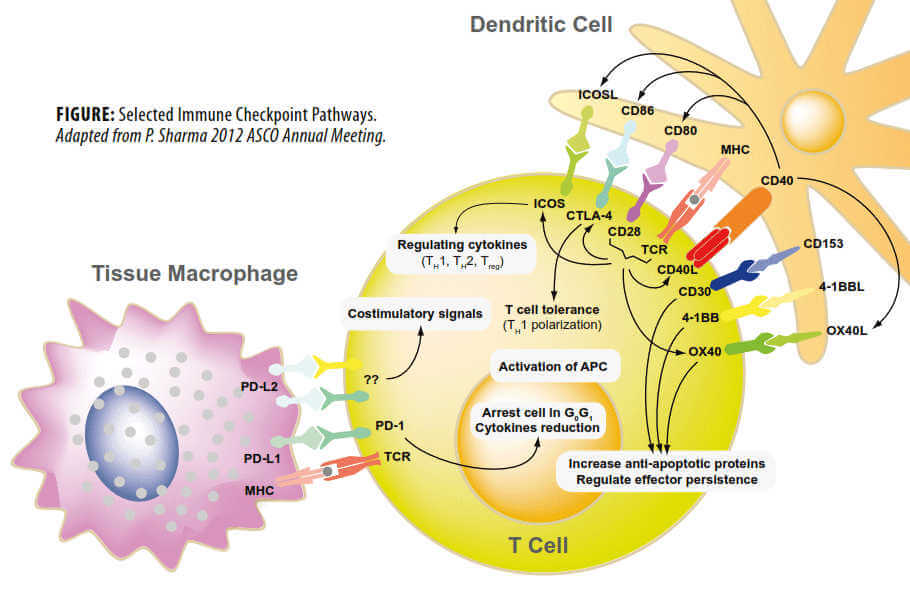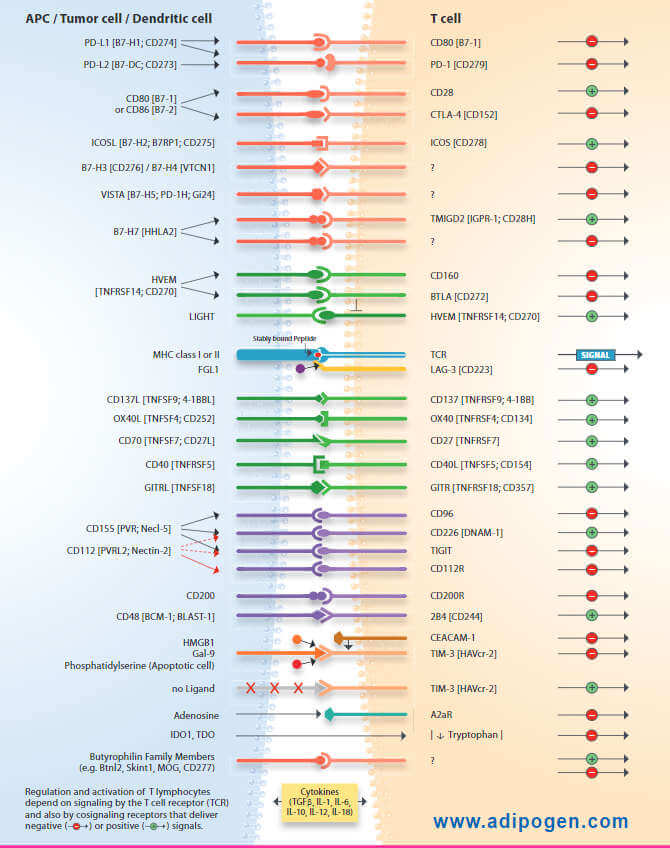Immune checkpoint antibodies from Bio X Cell
Bio X Cell offers an extensive selection of antibodies targeting mouse immune checkpoint proteins
Discover the immune checkpoint proteins from Chimerigen Laboratories
The B7 family consists of structurally related cell-surface protein ligands, which bind to receptors on lymphocytes that regulate immune responses. Activation of T and B lymphocytes is initiated by engagement of cell-surface, antigen-specific T cell or B cell receptors, but additional signals delivered simultaneously by B7 ligands determine the ultimate immune response. These “costimulatory” or “coinhibitory” signals are delivered by B7 ligands through the CD28 family of receptors on lymphocytes, resulting also in the modulation of interleukin production. Interaction of B7-family members with costimulatory receptors augments immune responses and interaction with coinhibitory receptors attenuates immune responses.
There are currently nine known members of the B7 family: B7.1 (CD80), B7.2 (CD86), inducible costimulator ligand (ICOS-L), programmed death-1 ligand (PD-L1), programmed death-2 ligand (PD-L2), B7-H3, B7-H4, VISTA (B7-H5) and B7-H7, and four known members of the CD28 family: CD28, CTLA-4 (CD152), ICOS, PD-1. The importance of the B7-CD28 superfamily in regulating immune responses is shown by the role of some members in the development of immunodeficiency and autoimmune diseases. Manipulation of the signals delivered by B7 ligands has shown potential in the treatment of autoimmunity, inflammatory diseases and cancer.


We gladly support you by keeping you updated on our latest products and the developments around our services.